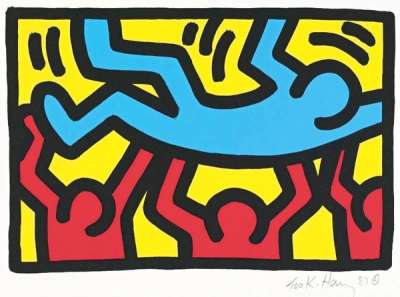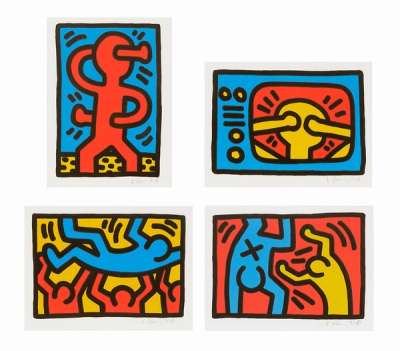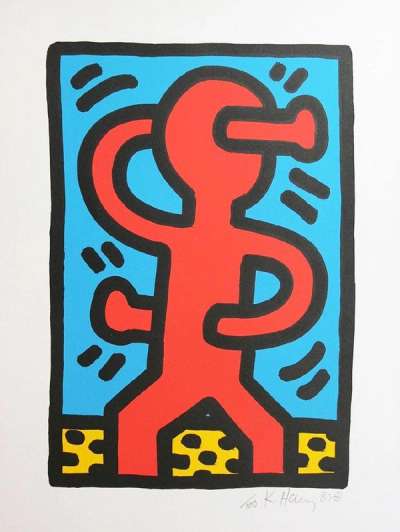
Untitled 1987

Untitled 1987
Signed Print
Keith Haring
£16,000-£24,000Value Indicator
$30,000-$50,000 Value Indicator
$29,000-$45,000 Value Indicator
¥150,000-¥220,000 Value Indicator
€19,000-€29,000 Value Indicator
$160,000-$240,000 Value Indicator
¥3,060,000-¥4,590,000 Value Indicator
$20,000-$30,000 Value Indicator
AAGR (5 years) This estimate blends recent public auction records with our own private sale data and network demand.
There aren't enough data points on this work for a comprehensive result. Please speak to a specialist by making an enquiry.
Medium: Screenprint
Edition size: 100
Year: 1987
Size: H 43cm x W 52cm
Signed: Yes
Format: Signed Print
TradingFloor
Track this artwork in realtime
Watch artwork, manage valuations, track your portfolio and return against your collection
Track auction value trend
Auction Results
| Auction Date | Auction House | Location | Hammer Price | Return to Seller | Buyer Paid |
|---|---|---|---|---|---|
| October 2024 | Bukowskis, Stockholm | Sweden | |||
| July 2011 | Cornette de Saint Cyr Paris | France | |||
| July 2011 | Cornette de Saint Cyr Brussels | Belgium |
Meaning & Analysis
This signed silkscreen from 1987 is a limited edition of 100 by Keith Haring. Untitled 1987 features a brightly coloured television screen that shows an image of a genderless figure with its hands covering its eyes. The print is rendered with thick, bold lines and bright block colours of red, blue and yellow.
Throughout his career Haring used a pictographic style inspired by Egyptian hieroglyphics and bright colours to communicate clear-cut moralistic messages. One such pictorial sign was the television screen. Living through a time of technological acceleration, Haring saw the “machine aesthetic” as a threat to humanity and used the television as a powerful symbol for totalitarian-style manipulation. Haring uses the image of the television screen in this work to symbolise the uncontrollable nature of mass culture and the horrors of death, illness and war witnessed through mainstream news outlets.
The use of many simplified figures and forms throughout his oeuvre, reflects Haring’s interest in how signs are used in many different cultures to concisely communicate multifaceted ideas. Untitled 1987 is indicative of this in its use of bright colours and clearly communicates complex ideas on passive media consumption by television in depicting the central figure with its eyes covered.
Keith Haring was a luminary of the 1980s downtown New York scene. His distinctive visual language pioneered one-line Pop Art drawings and he has been famed for his colourful, playful imagery. Haring's iconic energetic motifs and figures were dedicated to influencing social change, and particularly challenging stigma around the AIDS epidemic. Haring also pushed for the accessibility of art by opening Pop Shops in New York and Japan, selling a range of ephemera starting from as little as 50 cents. Haring's legacy has been cemented in the art-activism scene and is a testament to power of art to inspire social change


